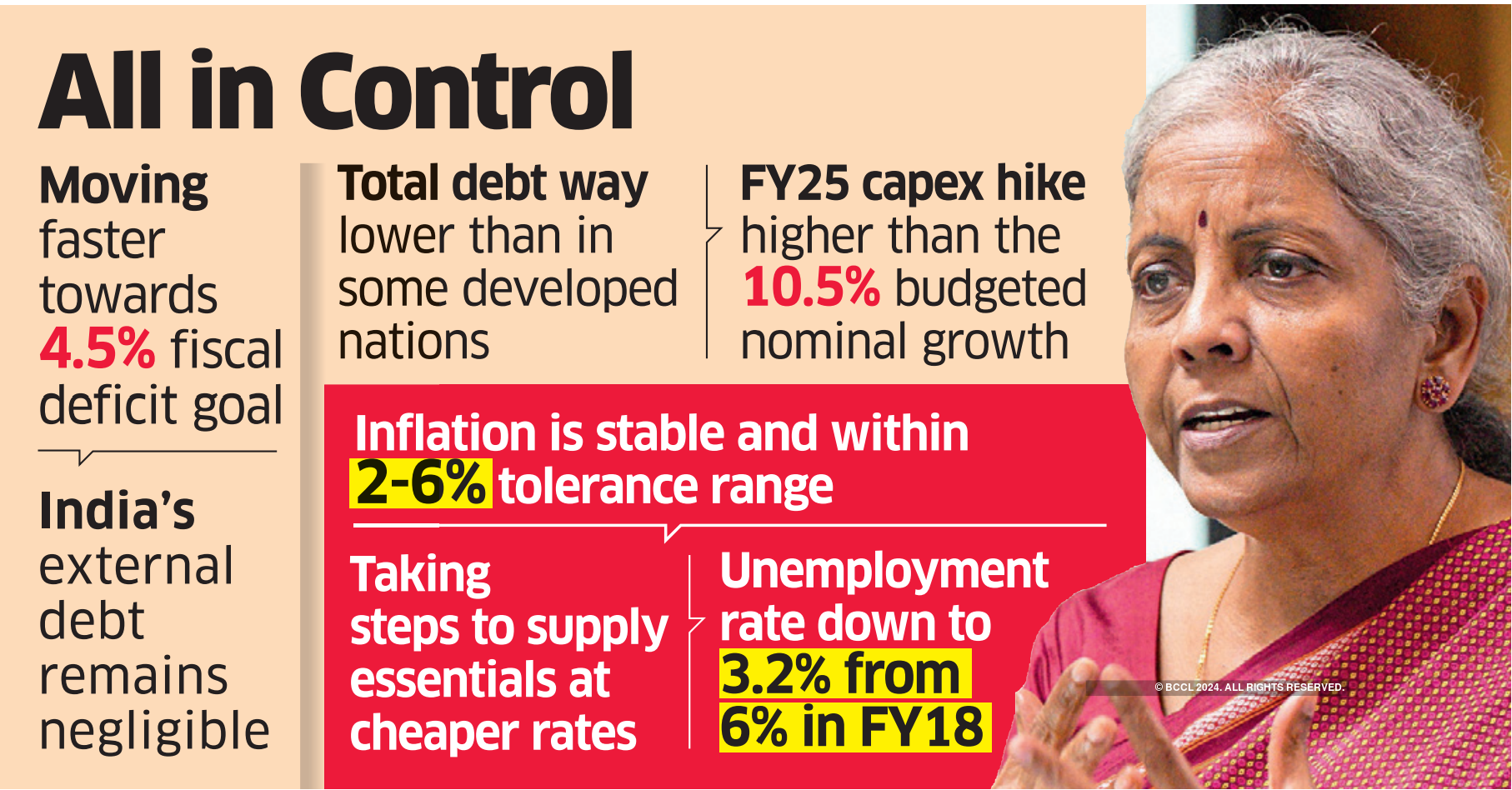Sitharaman’s remark came during a discussion on the interim Budget for FY25 in the Lok Sabha. The minister said prudent spending and efficient management of finances by the Centre have enabled it to restrict its FY24 fiscal deficit at 5.8% of gross domestic product (GDP), better than the budgeted goal of 5.9%.
Sitharaman said the government is moving faster towards the goal of restricting the deficit at 4.5% by FY26, as it’s aiming to contain it at 5.1% next fiscal. It’s also reducing its core debt, she added.
The Lok Sabha subsequently passed the interim Budget for FY25, which envisages a total spending of Rs 47.6 lakh crore, and the supplementary demands for grants for FY24 and relevant appropriation bills.

The Lower House also passed the Finance Bill 2024, completing the approval process for the interim Budget, and cleared the Rs 1.19-lakh crore budget of the Union Territory of Jammu and Kashmir.
The combined debt of the Centre and states is about 81% of GDP, which has come down from roughly 88% in FY21, when the pandemic-related spending had caused it to spike. And the country’s external debt remains negligible, unlike many others, the minister said.
In contrast, Sitharaman said, there are developed countries and emerging economies that have a debt-to-GDP ratio in excess of 100%; in some countries like Japan, the ratio is more than 200%.
The minister said the International Monetary Fund’s forecast that India’s debt will touch 100% of its GDP is only in case of a stressed scenario, and “it’s not a fait accompli”. To be sure, the IMF has also stated that under favourable circumstances, India’s debt can come down to 70% of GDP as well.
Capex/Inflation
Sitharaman emphasised on the capital expenditure push of the interim Budget for FY25, stressing that the outlay for such spending has been raised almost 17% from the revised estimate for this fiscal to a record ₹11.11 lakh crore, which is higher than the budgeted nominal GDP growth of 10.5% for the next fiscal.
She said retail inflation is now “stable and within the notified tolerance range” of 2-6%. It has moderated to an average of 5.5% between April and December 2023 from 6.8% a year before. Core inflation has declined to 3.8% from 5.1% during this period, she said.
Responding to questions on joblessness, Sitharaman said the unemployment rate has come down to 3.2% from 6% in FY18. The labour force has expanded to 57.9% in 2022-23 from 49.8% in 2017-18, and that participation of women in the workforce has improved.
(You can now subscribe to our Economic Times WhatsApp channel)











